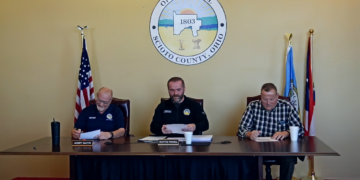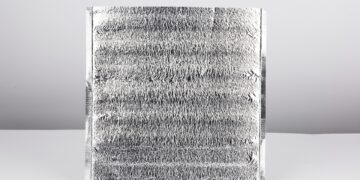Fall is on the way, and with it, some of the best travel opportunities America has to offer. Autumn is New England’s time to shine, featuring fall foliage that draws tourists from the dense urban Northeast and beyond. Outdoor enthusiasts flock to the Northwoods of Minnesota, Wisconsin, and Michigan, but it’s not always the chill of the air that draws them near. More often, it’s the promise of hunting season. For those who aren’t ready for the cold, places like Arizona are also beautiful this time of year. These are all great reasons to load up the RV.
For most of America, fall is a time of heavy precipitation. Usually, there’s rain, sometimes sleet, and maybe even some snow. Rainwater isn’t anything your RV particularly needs, but there are plenty of other liquids your RV can’t go without. What are the fluids you should check on your RV, exactly? Before you set out for your destination, make sure you’ve topped off these five fluids.
Windshield Wiper Fluid
Let’s start with that autumn rain—namely, dealing with it as you drive. In rainy conditions, drivers face double trouble with precipitation and the muddy water that comes splashing up onto your windshield. Without wiper fluid, your windshield wipers can leave streaks and cloudiness, impairing your vision as you drive. Keep your wiper fluid topped off to avoid this. Remember that mere water is no substitute.
Radiator Fluid
Whether you know it as coolant or antifreeze, your radiator fluid does double duty by preventing both freezing and overheating. You never know what fall weather will throw at you—race day for October’s Chicago Marathon is as likely to be 40 degrees Fahrenheit as 90 degrees Fahrenheit. For the marathon drives of RV trips, keep your engine fully prepared.
Transmission Fluid
Barring a hazardous and expensive leak, four-door sedan drivers don’t think much about transmission fluid. Because of the heavy weight an RV carries, though, there’s much more strain on transmission components, and fluid levels can prematurely run low. Check your transmission fluid level—usually a dark red color—and top it off if necessary before you go.
Brake Fluid
Brake failure behind the wheel of a recreational vehicle can be catastrophic. If water infiltrates the hydraulic system, steam will form under pressure. Then, the brakes can fail. RVers know that few things can be scarier than that. So, take a look at the brake fluid in your system to keep all components cool. This fluid check should be part of any RVer’s comprehensive safety checklist.
Motor Oil
Last—but certainly not least—good old motor oil is among the fluids you should check on your RV. The stop-and-go nature of RV ownership, with days of heavy use and months of idle sitting, can be deceptively hard on your engine’s oil. Even if it seems like the RV doesn’t see much use, consider an annual oil change as a necessary step for safe and fun RV excursions.





















































































